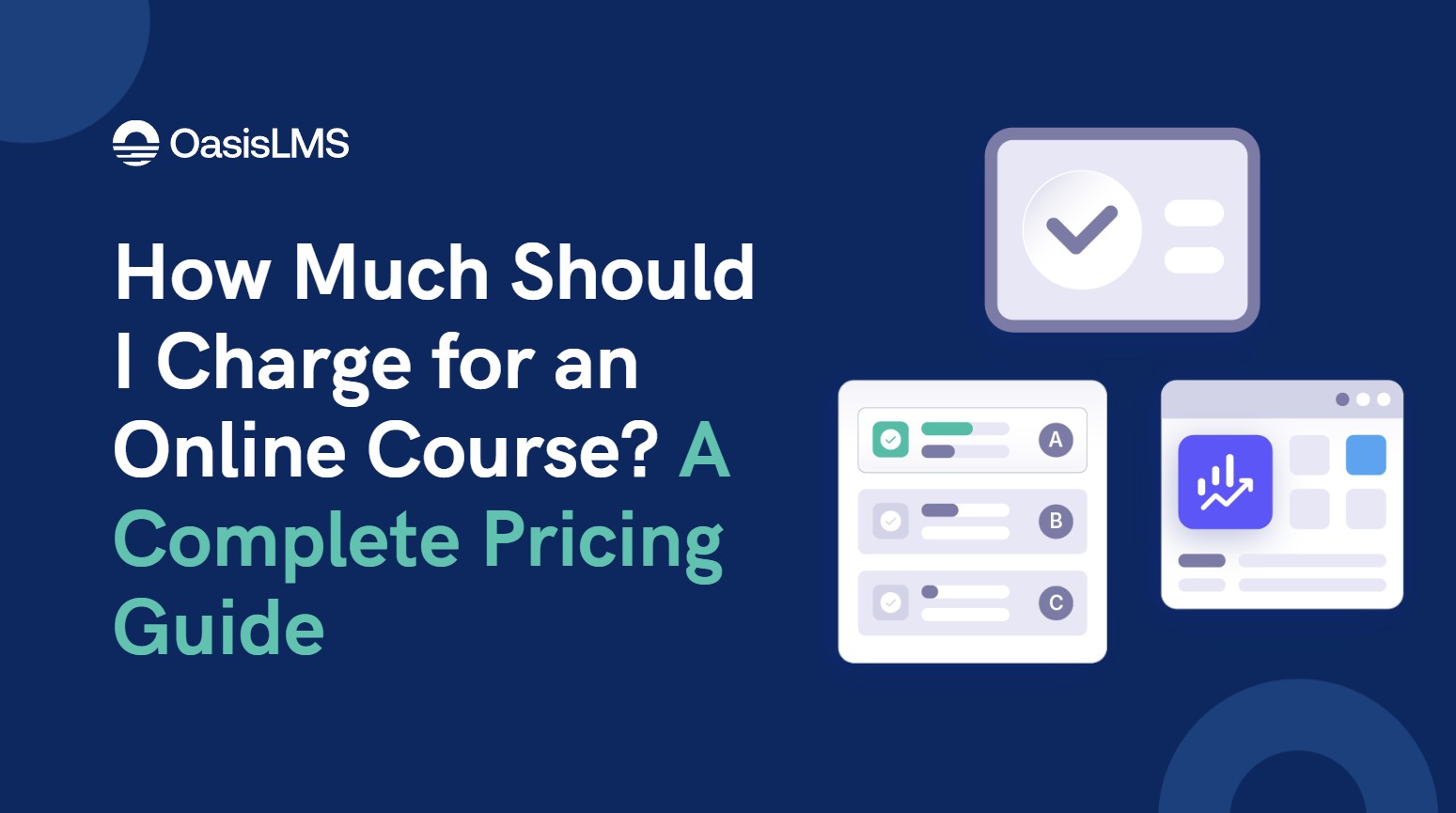
If you are about to launch an online course only to think “How much should I charge for an online course?” you are not alone. The vast range of courses sold online can be as little as $1 to $5,000+.
For businesses or non-profits selling courses, the challenge goes beyond picking a cost that feels right. Pricing reflects the value of your education, the brand/credibility of your organization and its offering, and the experience you’re delivering. If done well, it can drive both engagement and revenue while enhancing your mission.
This guide walks through how to price your online courses strategically, with real-world frameworks and examples tailored to professional education programs and association learning initiatives.
The first rule of course pricing? It isn’t about the length of your course. It is about the value your course provides.
Learners don’t care how long the course is if the value it provides to them outweighs the cost incurred. If your course helps them earn a credential, meet a licensure requirement, or directly advance their career, the perceived value is significantly higher than a general knowledge course.
Think of pricing as a message to your potential buyers: it tells learners what to expect. Price too low, and they may undervalue the content. Price too high, and you risk losing accessibility.
Here’s a starting range for different types of online learning:
If your learners are earning CME, CE, or certification credits, pricing in the mid-to-premium range is typically justified because of the measurable professional impact.
Competitive research is useful but only as context. If you are offering continuing education or credentials, your market is drastically different then a coach offering self help courses.
Start by identifying your audience type:
Each group values education differently. A nurse renewing a license has a different price tolerance than a manager exploring leadership training. That’s why it’s essential to align your pricing with audience motivation and funding source.
If you’re an association, consider offering member and non-member pricing. This is a powerful way to add tangible value to membership and increase dues paying members.
Before you create your price, make sure you understand all the cost drivers so you don’t lose money long term. Also think what does success look like?
Key cost factors include:
A simple formula to test:
Price = (Total Costs + Desired Profit) ÷ Expected Enrollments
For example, if developing a course costs $5,000 and you expect 50 learners, charging $150 per learner is how you break even. Don’t forget that you need to make a profit to pay yourself and/or re-invest in the business. Charging $250 - $300 per learner will achieve that goal.
Associations specifically can also offset costs by using sponsorships, grants, or tiered access models, where premium pricing applies to enhanced content, coaching, or bundles.
Choose a Pricing Model That Fits Your Goals
Pricing models vary greatly depending on your business. They depend on the type of content you deliver, and learner engagement goals.
1. One-Time Purchase
Ideal for standalone courses or certification prep modules.
2. Subscription or Membership
Perfect for associations offering continuous learning or access to a library of CE.
3. Tiered or Bundled Pricing
Offer different levels of access or combine related courses.
4. Corporate or Enterprise Licensing
For healthcare systems, employers, or associations training multiple teams.
OasisLMS supports all of these models, from member pricing and bundles to enterprise licensing and subscription access.
Even the best pricing strategy can fall flat if your eCommerce LMS can’t support it. To sell online courses effectively, you need a learning management system with built-in eCommerce flexibility, one that lets you:
An eCommerce LMS helps turn your education strategy into a recurring and often passive revenue engine. Instead of manually sending out invoices or taking orders, your LMS can do it for you. This gives learners a smooth checkout process which increases sales conversions. Also, your team real-time insight into sales, engagement, and ROI.
That’s why OasisLMS includes native eCommerce tools, flexible pricing rules, and AMS integrations, so you can focus on creating value, not managing transactions.
Pricing isn’t math, it is marketing.
Most importantly, avoid underpricing. In professional andcontinuing education, low prices can erode trust and learners often equate lowcost with low quality.
Your first price doesn’t have to be final. Use real data to refine.
Track:
You can even A/B test different price points or bundles inside your LMS. If engagement drops significantly when you increase price, test whether adjusting value messaging (not just cost) improves conversion.
Over time, use performance data to confidently raise or refine your pricing, especially as your brand, content quality, and learner outcomes improve.
Even seasoned education teams fall into these traps:
Remember: a well-structured pricing strategy isn’t about being the cheapest. It is about being the most trusted and most relevant choice for your audience.
Use this as a flexible framework and not a rulebook. What matters most is that your pricing aligns with your mission, audience, and long-term sustainability.
Pricing an online course is part strategy, part psychology ,and part mission alignment. The right number should reflect your course’s impact, sustain your team’s efforts, and signal the quality learners can expect.
Whether you’re building member education, certification programs, or CME, think beyond “what will people pay” and focus on “what’s the lasting value they’ll gain.”
OasisLMS helps associations and education providers manage, monetize, and deliver online learning at scale with flexible pricing models, built-in eCommerce, and robust reporting.
Whether managing CME for physicians or supporting member growth, Oasis LMS helps deliver high-impact education efficiently and at scale.
